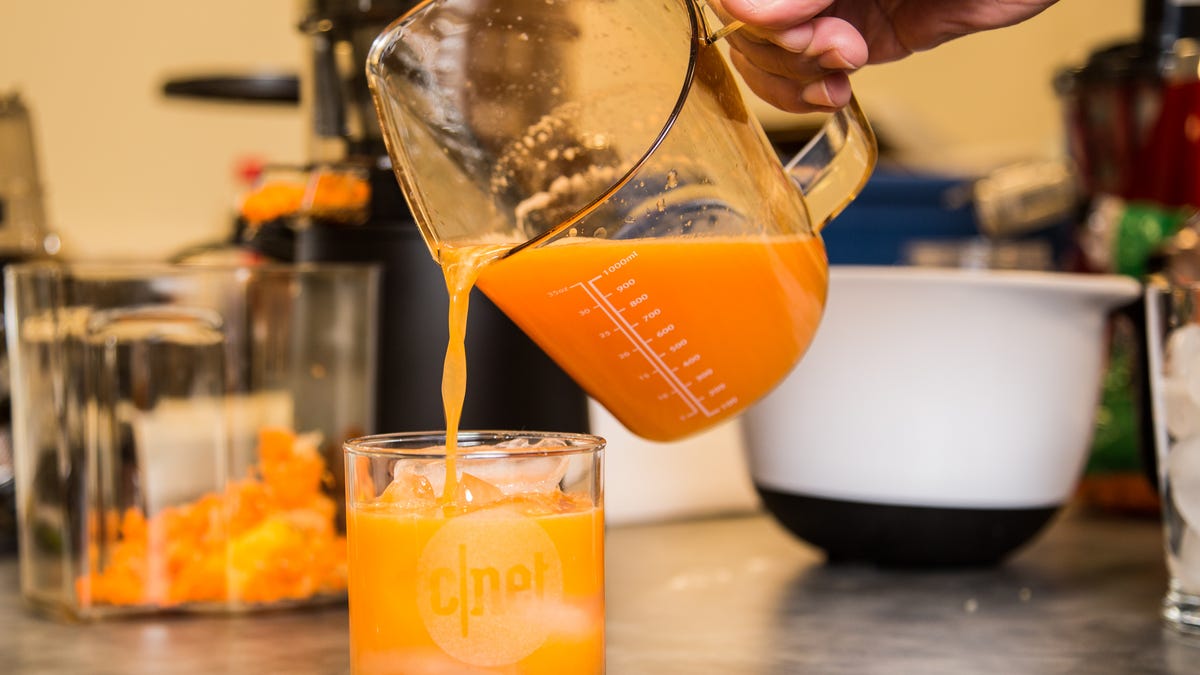 Why You Can Trust CNET
Why You Can Trust CNET 8 Do's and Don'ts for Juicing at Home
Juicing at home is convenient and tasty, but there are some pitfalls to avoid and techniques to know before you start.

You've finally taken the plunge and bought a juicer. No more paying sky-high prices for fresh-squeezed juice just to get your fix.
Before you start pulverizing produce, there are a few things you absolutely need to know. This guide will save you time and hassle, keep mess to a minimum and prevent damage to your new juice extractor. It's time for Juicing 101.
You can juice everything from soft fruits and citrus, to leafy greens.
What can you juice?
Here are just a few examples of produce you can juice.
Fruits
- Apples
- Berries (small juice content but big flavor)
- Citrus (lemons, limes, oranges, etc.)
- Grapes
- Kiwis
- Melons (Honeydew, watermelon, cantaloupe)
- Pears
- Pineapple
Vegetables
- Beets
- Broccoli
- Carrots
- Celery
- Cucumber
- Kale
- Spinach
- Tomatoes
Juicing do's
You'll need to prep, peel and chop food down to size before you juice.
Prep your produce
You can't just throw in whole fruits and vegetables into your juicer and expect tasty results. You need to prepare them properly first. Many juicers have small food chutes, so you'll have to chop items down to a size that fits.
The actual juicing process is fast, with foods zipping through the machine in seconds. You can liquefy a complete list of ingredients in minutes, so preparing produce in advance will save you lots of time.
For fruits, especially citrus, that means peeling away tough outer skins, peels and pith. They can add bitter and unpleasant flavors to your juice.
Remove any seeds and hard pits, too, especially those in stone fruits. Not only can these damage your juicer and create a bitter taste in your juice, but most contain toxic chemicals. For example, apricot, cherry, peach and plum pits have cyanogenic compounds, which if crushed and ingested, will turn into cyanide in the body.
The Omega J8006 is an excellent slow, cold-press juicer.
Consider a cold-press machine
Affordable, entry-level juicers tend to be centrifugal machines. These appliances spin sharp blades at high speeds. Juice is then pushed (and strained) through a mesh sieve underneath that.
They're fine for processing oranges, apples and carrots, but have trouble pulling liquid from leafy greens.
Cold-press juicers use powerful augers to slowly crush produce.
If you plan on juicing fibrous vegetables such as kale and spinach, then a cold-press juicer is worth considering. One of my favorite models, the $280 Omega J8006, is an excellent option. The machine slowly crushes all manner of produce and extracts lots of liquid from even the toughest items.
Pulp bins collect lots of yucky stuff.
Line your pulp basket
Even the most efficient juicers create plenty of solid waste. Here's a good way to make cleaning up a snap. Line the pulp collection bin of your juicer with plastic wrap first. After juicing your items, just pull the wrap out and throw it, pulp and all, into the trash.
Enlist the dishwasher
Other parts of juicers collect liquid and debris, too. That includes augers (cold-press), blades and mesh screens (centrifugal) and lids. Check your model's manual whether any of these parts are dishwasher-safe. If so, you'll save yourself a lot of manual labor.
Juicing don'ts
Drink your juice fast. Don't let it sit around.
Let juice sit around
Freshly made juice may be healthy, but it's also unpasteurized and preservative-free. Try to drink it right away. If you must store juice, make sure to do so in the fridge. Just don't keep it longer than 24 hours total.
Using dry items
Avoid trying to juice things with low water content. For example, stay away from coconut, sugar cane and grains. These ingredients have massive amounts of fiber but barely any liquid.
Pushing produce using something other than the plunger
Many juicers come with their own plastic plunger tools. They're designed for use with a particular model and are carefully sized to match. They're to help you push items down the food chute without getting caught in the juicer mechanism. If you try this with any other implement, especially a metal object, you could destroy the machine and injure yourself in the process.
Don't let your dirty juicer stay that way for long.
Waiting to clean up
It's tempting, but don't let your juicer sit around dirty for long. All that concentrated pigment, pulp and liquid sets in quickly, especially if left to dry. Make it a habit to clean your juicer parts soon after use. Either that, or rinse it, then toss it into the dishwasher with no delay.

